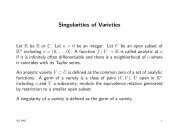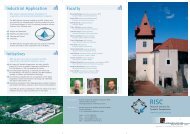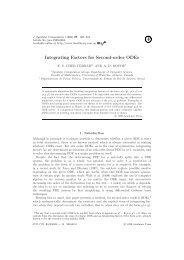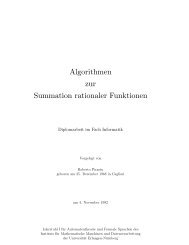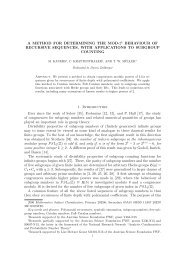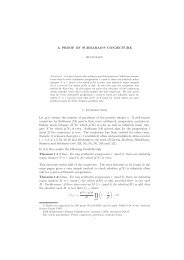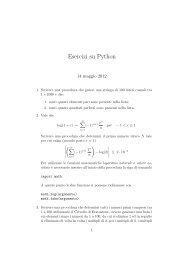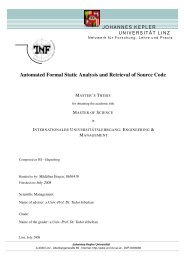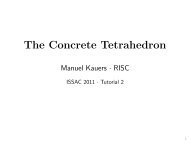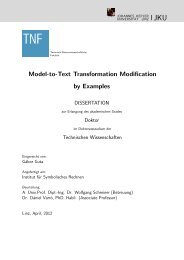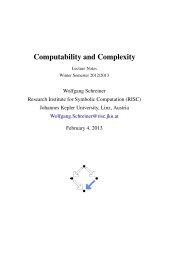Deformation Techniques for Efficient Polynomial Equation ... - RISC
Deformation Techniques for Efficient Polynomial Equation ... - RISC
Deformation Techniques for Efficient Polynomial Equation ... - RISC
Create successful ePaper yourself
Turn your PDF publications into a flip-book with our unique Google optimized e-Paper software.
98 HEINTZ ET AL.<br />
By means of the well-parallelizable polynomial algorithm of Berkowitz<br />
[Ber84] we compute the coefficients of the characteristic polynomial<br />
X h # Q[T][Y] of the matrix h(T, v 1 (M), ..., v n (M)).<br />
Let<br />
with a 0 , ..., a D # Q[T] and let<br />
D<br />
X h = :<br />
l=0<br />
D<br />
h*(T, X) := :<br />
l=1<br />
a l (T ) Y l<br />
a l (T ) h l&1 .<br />
Recall from the comments on Lemma 5 that the matrix h(T, v 1 (M), ..., v n (M))<br />
is unimodular in Q[T] D_D . Thus a M<br />
0 is a unit of Q[T] M and in particular<br />
we have a 0 (t){0.<br />
Hence, the CayleyHamilton Theorem implies that<br />
h(T, v 1 (M), ..., v n (M)) &1 = &1<br />
a 0<br />
h*(T, v 1 (M), ..., v n (M)) (17)<br />
holds in Q[T] D_D<br />
M<br />
. We compute now the entries of the matrix<br />
h*(T, v 1 (M), ..., v n (M)) by means of an arithmetic circuit # 2 which extends<br />
# 1 increasing the size and nonscalar depth of # 1 by D O(1) and O(log D),<br />
respectively.<br />
We would like to compute the matrix h(T, v 1 (M), ..., v n (M)) &1 by means<br />
of <strong>for</strong>mula (17). However, we are unable to do that in Q[T] because this<br />
would require division by the polynomial a 0 (T ). There<strong>for</strong>e we replace the<br />
matrix h(T, v 1 (M), ..., v n (M)) &1 by a suitable approximation in our subsequent<br />
argumentation. For this purpose let us use the following identity in<br />
QT&t :<br />
Thus, the polynomial<br />
&1<br />
a 0 (T ) = 1 <br />
a 0 (t)<br />
l=0\ : a l<br />
0(T )&a 0 (t)<br />
.<br />
a 0 (t) +<br />
a 0 *(T ):= 1 2<br />
a 0 (t)<br />
l=0\ k<br />
: a l<br />
0(T )&a 0 (t)<br />
a 0 (t) +<br />
approximates the rational function &1a 0 (T )inQT&t with precision 2 k .




